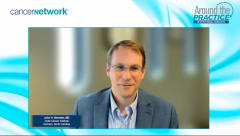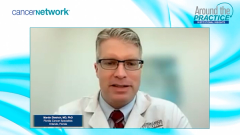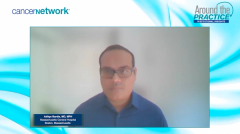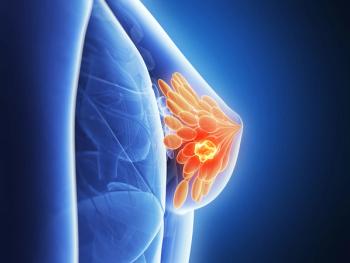
Circulating Tumor DNA: Future Directions in Care
Expert oncologists look toward future utilization of circulating tumor DNA testing and consider how the field of oncology may evolve.
Episodes in this series

Transcript:
John H. Strickler, MD:Dr Dietrich, do you have any closing thoughts or advice to clinicians who may not be familiar with the use of circulating tumor DNA [ctDNA]? Any lessons that you’ve learned along the way of working with this technology?
Martin Dietrich, MD, PhD: Well, there is an excitement about this, and I think no matter where we stand on the data in the respective disease phase basis, MRD is here to stay and is going to get more important. I think we can all agree that this is going to provide us with the guidance and information that will complement our traditional approaches as well. I do think that for these kinds of assays, the interpretation is dependent on experience. I would think, with the disclaimer of the things that we don’t know, that we’re not certain about that. I think it is reasonable to identify patients where this could be utilized. This doesn’t necessarily always have to be a phase 3 backed-up utilization. So, I think that there are many clinical scenarios that may not fit the mold but with MRD [minimal residual disease] monitoring we’ll have a great deal of utility. I could think of so many instances, and I mentioned a couple of them, that have difficult imaging scenarios with patients who had fast progressing disease when we are worried about clinical complications in the absence of monitoring. The marker-negative disease is a very good space, especially in the metastatic setting which we have an interest in monitoring. It is a technology that after the initial tests becomes quite affordable. The mutations are set, the primers are designed, and the longitudinal monitoring is a quite reasonable point of additional cost, so I would think of this as a harmless technology with its larger application. I would encourage the adoption of this to gain a feeling of what we’re looking at and with the utility, I think we see the opportunities. The second one is obviously without the patients that are identified.
Many of these clinical trials are relatively easy to do. They complement our current standard of care so that it is an additional diagnostic tool. It’s easy to enroll, so I would encourage in the intervention setting for patients to be referred to and enrolled in these clinical trials to really help us refine where these clinical trials may lead us in terms of their full utility. I do think that we still need a little bit of patience, but this train is certainly coming and it’s not going to get stooped. I think Dr Bardia gave an outlook into not only the cancer setting but also the precancer setting from our agnostic kind of tests. Those modalities are ongoing, so I can’t think of an end to the opportunities, and again, we don’t want to get ahead of the data. Although, there is certainly a great deal of prospect for the different usages, and that would be tailored to each individual space. I think we’ll use MRD monitoring in breast than we would use in colon or lung cancer but in their respective spaces I think they’ll be a good compass on how to move our patients in the best direction.
John H. Strickler, MD:Wonderful. Dr Bardia, do you have any advice for clinicians who may not be as familiar with ct DNA in the clinic?
Aditya Bardia, MD, MPH: Yes. The field of liquid biopsies, in general I would say, is getting solidified as we say. CtDNA is something that should be used as a standard of carein metastatic breast cancer, and if you have access to ctDNA technology in early breast cancer, it should be highly connected to a clinical trial. So, if there’s a diagnostic company that’s providing the assay and having an early doctor program connected to a clinical trial, you will get the results and know what to do with the results, which will be very valuable. So, ctDNA is here to stay. We’ve already seen the clinical application in certain settings and the expansion in other settings, which is going to increase. So, it’s really exciting to see the application of ctDNA.
Transcript edited for clarity.
Newsletter
Stay up to date on recent advances in the multidisciplinary approach to cancer.




















































































